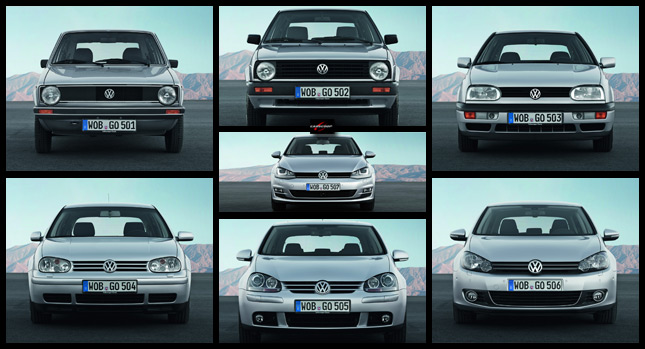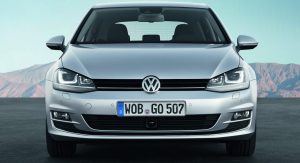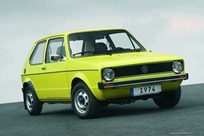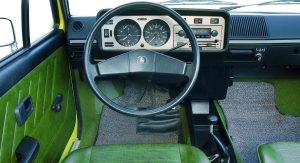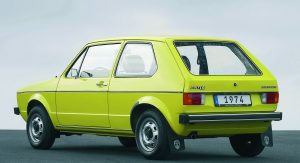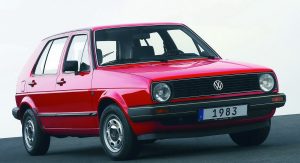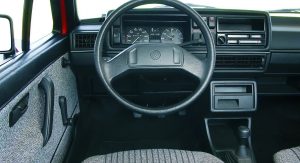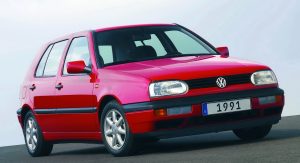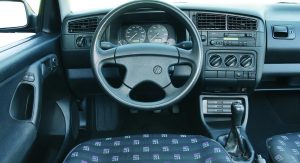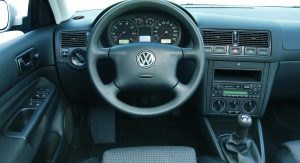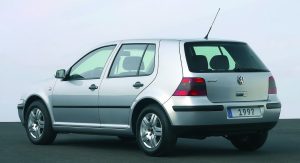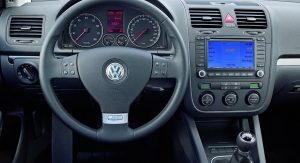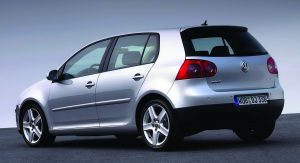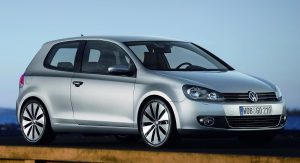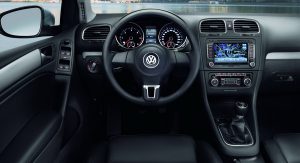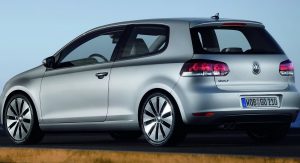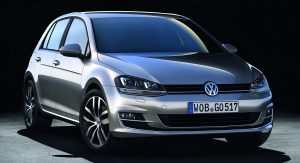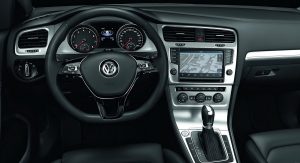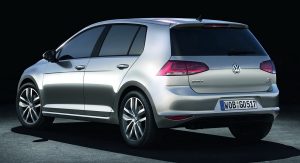If there is one car that can be compared to the Porsche 911 for using the same recipe for close to four decades, it is the Volkswagen Golf.
In a way, this is ironic since the 911 was derided by its detractors as a “posh Beetle” while recently, the VW Group, which has a long history with Porsche, acquired the Stuttgart sports car maker.
One could not imagine two cars more different than each other as one is a 2+2 sports car with rear- or all-wheel drive and flat-six engines hung out behind the rear axle, while the other is a mass-market compact hatchback with the engine up front driving the front- or all four-wheels.
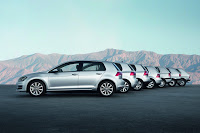 Nevertheless, despite the changes that come with each generation, the two models have one thing in common: they have adopted the path of careful evolution, not revolution, defining their respective segments and being the default buyers’ choice and the standard against which all newcomers are measured.
Nevertheless, despite the changes that come with each generation, the two models have one thing in common: they have adopted the path of careful evolution, not revolution, defining their respective segments and being the default buyers’ choice and the standard against which all newcomers are measured.
Even though VW never officially numbered each generation, motoring journalists and the public started, at some point, referring to Golfs as Mk1, 2 etc. With 29.13 million units sold through the end of July this year, the Wolfsburg-based automaker finally accepted the numbering system “officially” only right after the launch of the seventh generation.
What follows is a brief recount of the Golf’s history, which spans the better part of four decades.
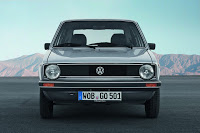 Golf Mk1 (A1/Typ 17, 1974-1983)
Golf Mk1 (A1/Typ 17, 1974-1983)
It took a very long time for VW to launch a replacement for the archaic Beetle that dated back to WWII. When it did, it utilized Auto Union’s experience with its Audi front-wheel drive cars and hired famed Italian designer Giorgio Giugiaro for the styling of the car.
The end resulted was a simple, compact yet roomy design. The car was named Golf in most markets, Rabbit in the US and Caribe in Mexico and started rolling off the assembly line in March of 1974.
It proved to be a smashing hit selling a million units by October 1976. This was also the year that the VW gave birth to what is commonly known as the GTI category with the first-ever, 1.6-liter 108HP (110PS) Golf GTI (even though the Renault 5 Alpine preceded it, it didn’t gain the same status).
Being sold in every continent across the world, the Golf MK1 and its various offspring like the Jetta saloon and the Cabriolet, racked in 6.72 million sales.
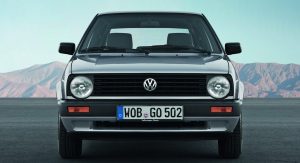 Golf Mk2 (A2/Typ 19E, 1983-1991)
Golf Mk2 (A2/Typ 19E, 1983-1991)
Designing a successor to the best-selling Beetle was difficult enough. Replacing the very successful Golf Mk1 proved to be quite a challenge as well. VW mostly retained the original’s shape but decided to make the second generation significantly bigger.
The new Golf was 170 mm longer and 55 mm wider than the original, while its wheelbase was stretched by 75 mm and the front and rear tracks were widened by 23 and 50 mm respectively.
The MK2 introduced many features in the compact class, such as the regulated catalytic converter in 1984, ABS in 1986 and in the same year, power steering and four-wheel drive.
The GTI engine grew to 1.8 liters and was offered in four- and 16-valve trims, with the former gaining a supercharger for the 158HP (160PS) G60 edition. VW also unveiled all-electric and hybrid prototypes as far back as 1989. A year earlier, total sales of the Golf since 1974 broke the 10 million-unit barrier with the Mk2 selling 6.41 million units throughout its life.
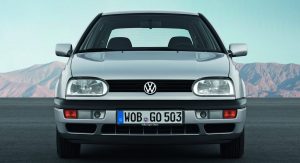 Golf Mk3 (A3/Typ 1H, 1991-1997)
Golf Mk3 (A3/Typ 1H, 1991-1997)
In August of 1991, VW unveiled the third generation of its venerable C-segment model. The Golf Mk3 had more rounded bodywork and despite retaining the Mk2’s wheelbase, it grew slightly in size, passing the 4.0 m mark (4,074 mm).
The GTI’s engine capacity also grew to 2.0 liters. The 8-valve version was poorly received due to its underwhelming output of just 113HP (115PS), though the 148HP (150PS) 16v version that followed and the 2.8- and 2.9-liter narrow-angle VR6 variants addressed this issue.
VW made sure that the Mk3 had its fair share of novelties such as side airbags, direct injection diesel engines, standard ABS and an estate (Variant) version.
It also spawned a new Cabriolet, which remarkably, soldiered on until 2002, when it was replaced by the soft-top version of the New Beetle.
The fourth-generation Golf also won the European Car of the Year award for 1992 and after six years in production, sold 4.96 million units.
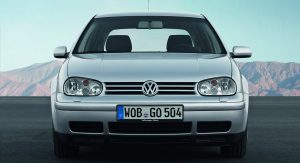 Golf Mk4 (A4/Typ 1J, 1997-2003)
Golf Mk4 (A4/Typ 1J, 1997-2003)
After the disappointing third generation, the Golf received a makeover with the company’s head of design Harmut Warkuss setting the theme for all versions that followed.
Dimensions grew once again, with the length being stretched to almost 4.2 m, while its platform also underpinned the Audi A3, Seat Leon and Skoda Octavia among other cars.
The highlight of the fourth generation model, however, was the quality of its interior, which was equal or in some cases, even better than bigger and more expensive cars.
The Mk4 was the first Golf to sport a fully galvanized bodywork, satellite navigation and xenon headlights. The available Haldex four-wheel drive system that did away with the center differential was adopted by most manufacturers and is still used in crossovers today.
The fourth generation also introduced electronic stability control, window airbags, direct injection petrol engines, a six-speed manual transmission, and the first-ever dual-clutch gearbox (DSG) in the range-topping R32. The GTI was powered by a 20-valve 1.8-liter turbocharged engine.
After 4.92 million sales, it was retired and replaced by the…
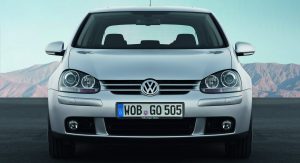 Golf Mk5 (A5/Typ 1K, 2003-2009)
Golf Mk5 (A5/Typ 1K, 2003-2009)
With the fifth generation model, VW set out to fix the car’s handling characteristics which, by that point, fell well short of the class-leading Ford Focus.
The all-new PQ35 platform was 35 percent more rigid than before and perhaps more crucially, the torsion beam rear axle was replaced by a multilink suspension, bringing it up to date with the competition.
The Mk5 featured the first turbocharged direct injection engine in the 197hp (200PS) 2.0-liter GTI and the world’s first mass-production twincharged engines, which combined a supercharger for low end torque and a turbocharger for maximum output. Bi-xenon headlights, rain sensors, a panoramic sliding sunroof as well as a new seven-speed DSG gearbox were also launched on this model.
The Golf Plus compact MPV was added to the range, which by the end of 2009, sold more than 3.27 million units.
 Golf Mk6 (A6/Typ 5K, 2008-2012)
Golf Mk6 (A6/Typ 5K, 2008-2012)
Making its debut at the 2008 Paris Motor Show, the sixth generation of the Golf that won the 2009 European Car of the Year award was practically a fifth generation model restyled by Walter da Silva.
VW redesigned the interior to address criticism that the Mk5’s perceived quality had dropped compared to the Mk4, while the laser-welded bodywork received the top Euro NCAP five-star crash test rating.
This was to be the shortest-lived Golf to date as it was replaced after just four years in production.
Under the hood, the direct-injection petrol engine range increased in number, the turbodiesel units switched to the more efficient common rail injection and the Golf BlueMotion achieved CO2 emissions of just 99 g/km.
New features included an auto stop/start system, brake energy recovery, electronic dynamic chassis control (DCC) suspension, park assist and hill start assist systems, cornering headlights and LED taillights.
On Tuesday night, Volkswagen released the seventh generation of its Golf series in Berlin prior to the car’s world premiere at the Paris Motor Show on September 27. It will go on sale in Europe this November, with the rest of the world to follow next year.
Among other highlights, are the Golf’s brand new MQB platform and engine range that includes a 1.4-liter TSI petrol unit with a cylinder deactivation system, and the lightweight design that shaves up to 100 kg / 220 lbs lighter over the outgoing model even though it has grown in size.
The new Golf also introduces several new features such as the standard XDS electronic differential lock on all models (found in the previous-generation Golf GTI), a Multi-collision braking system, automatic park assist and touchscreen infotainment systems.
For a more comprehensive coverage along with a barrage of photos and videos of the Golf MK7, check out our previous post here.
By Andrew Tsaousis
PHOTO GALLERY



